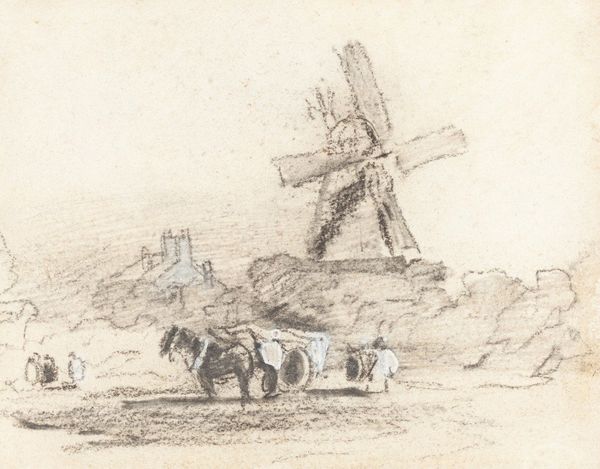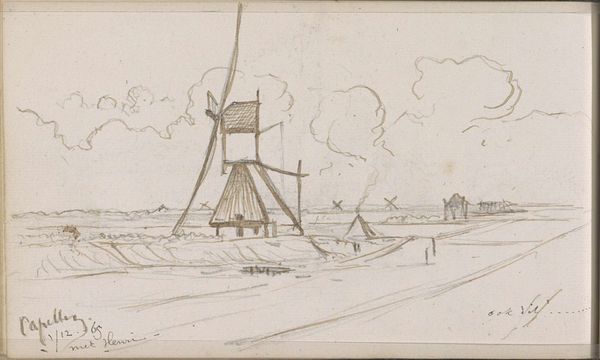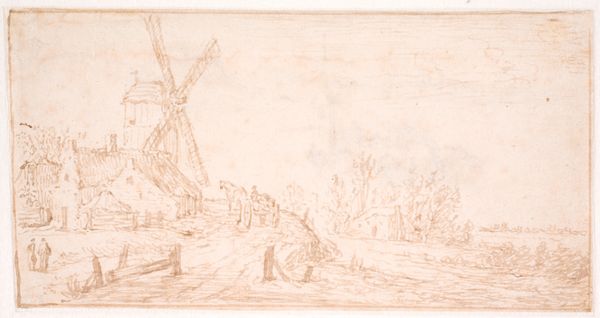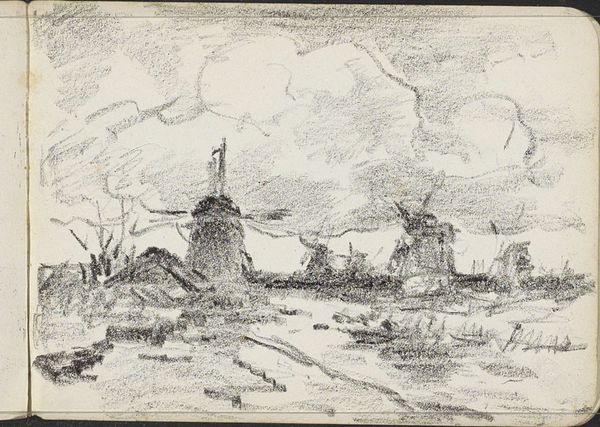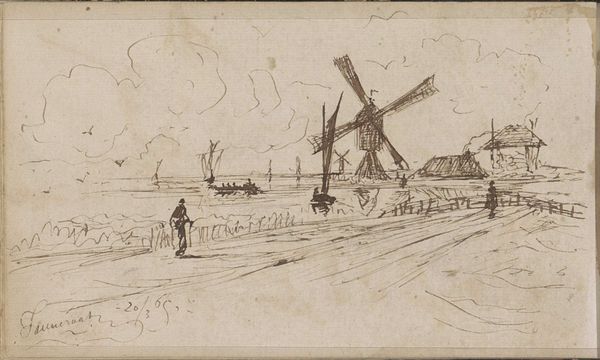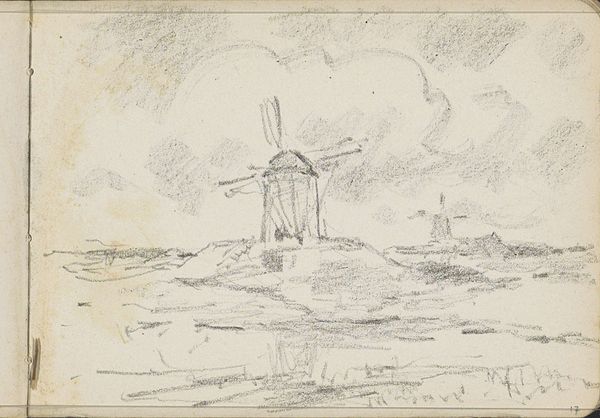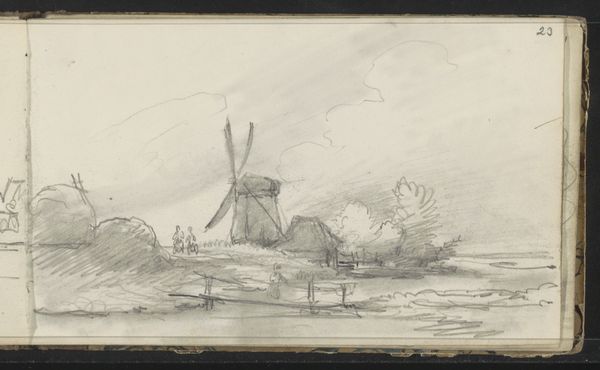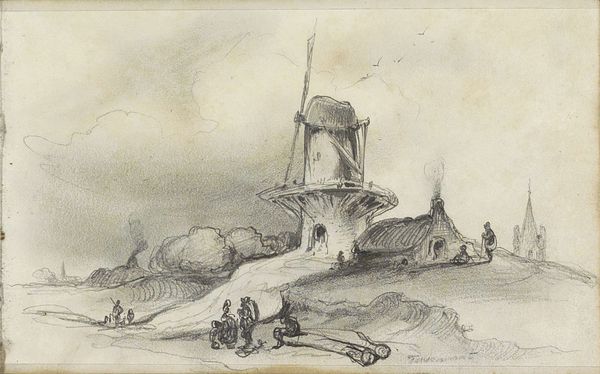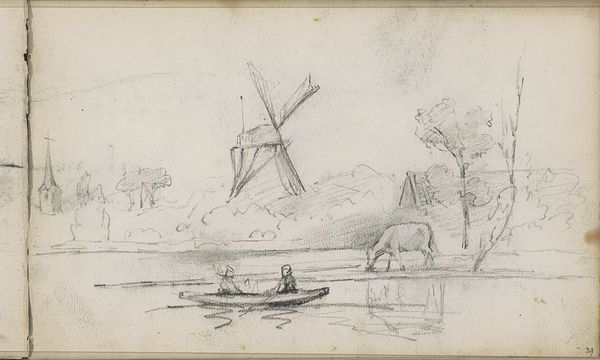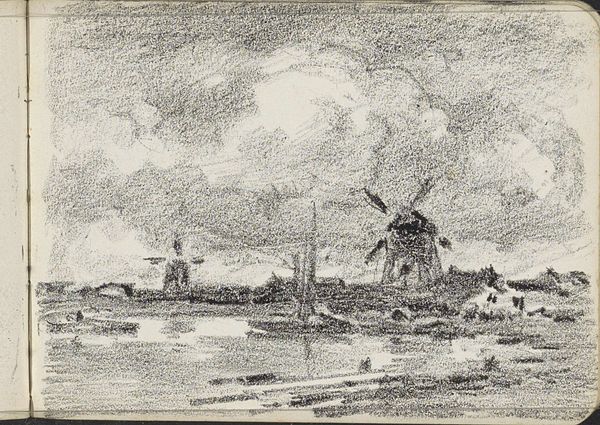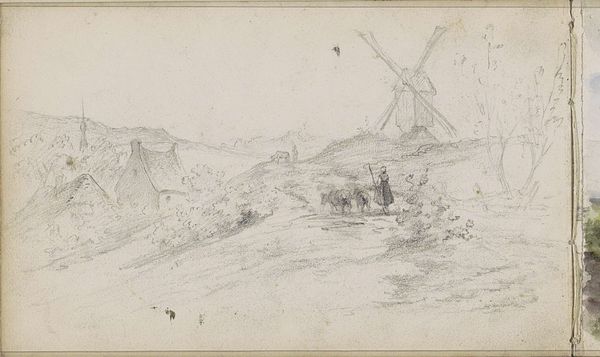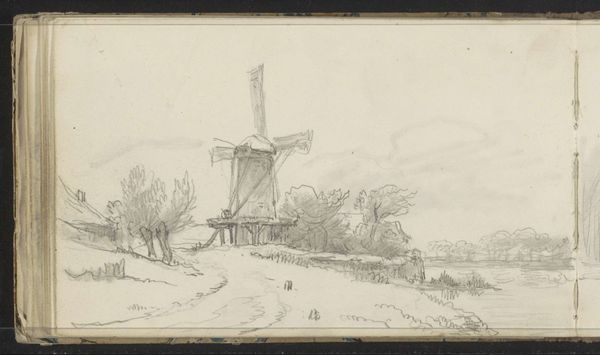
drawing, pencil
#
drawing
#
pencil sketch
#
landscape
#
romanticism
#
pencil
#
genre-painting
#
realism
Copyright: Rijks Museum: Open Domain
Curator: Let's take a look at this sketch now. This is Johannes Tavenraat's "Landschap met molen en paard en wagen in Ginneken," or "Landscape with windmill and horse and cart in Ginneken," created in 1839. It’s rendered in pencil. What are your initial thoughts? Editor: My immediate response is one of subdued stillness. The scene, though depicting figures in transit, possesses a quietness—almost a melancholic air—primarily conveyed by the restrained tonal range and open composition. The dominance of sky seems to mute any human drama. Curator: I concur about the quietness. Observe the strategic placement of the windmill slightly off-center. Note the way Tavenraat uses line to delineate the various planes—foreground, midground, background—and establishes a dynamic interplay between structure and nature. Also, how the light models the clouds creating dramatic depth. Editor: Yes, that windmill is central, almost anchoring the composition; yet its placement allows our gaze to flow naturally towards the horse and cart. Considering that Ginneken was a rural village at this time, I find myself wondering how accurate this rendering actually is, how closely it reflects the lives and labor in the area, particularly within a socio-economic context of the era. What statements are we making in what’s included, as much as what’s been left out? Curator: That's a valuable consideration, the idea of intentionality. And what Tavenraat is communicating or omitting by aesthetic decisions. Think of the contrast of textures—the roughness of the foreground vegetation compared to the smooth expanses of the sky. These material qualities enhance the visual interest without overt sentimentality, despite it belonging to the period of Romanticism. Editor: Exactly! Romanticism idealized landscapes, often overlooking harsh realities. Where’s the hardship in this drawing, the struggle? Perhaps that very absence speaks volumes about how landscape painting, and the choice of what details to foreground versus obscure, can operate as a reflection of its contemporary culture, a choice to present idealized, peaceful existences versus struggle and reality. Curator: It's a compelling argument, emphasizing art’s engagement with contemporary audiences through these choices. This reading urges viewers to reflect on art's role in constructing cultural narratives. Editor: Ultimately, the sketch compels us to think not just about what's visually present, but also about its layered cultural context and the values the artist chose to emphasize. Curator: Indeed, it underlines the lasting role art plays in understanding societal norms. Thank you.
Comments
No comments
Be the first to comment and join the conversation on the ultimate creative platform.
